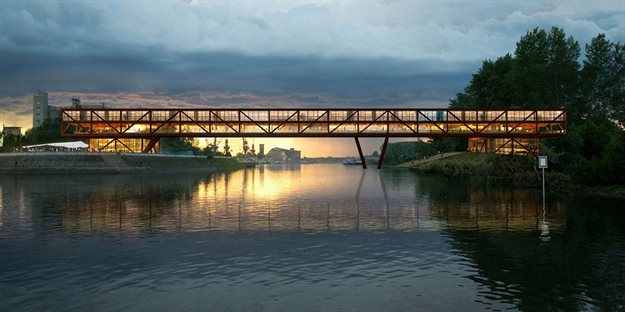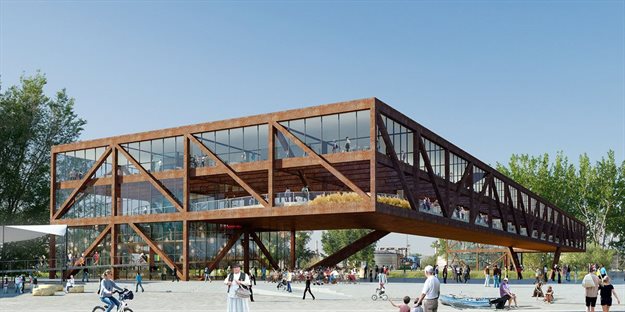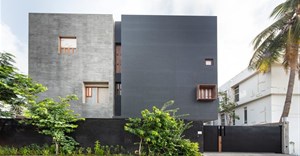ARCVS to design multifunctional bridge over River Danube in Serbia

The Elbow Shadow Bridge spans 200m at a width of 6m and will function as both a hotel and office building as well as a pedestrian walkway. The new building will also act as a gateway for pedestrians and cyclists between the city's late-17th-century Petrovarad in Fortress and its port.
The studio takes references from European influences such as the Ponte Vecchio and Rialto Bridge offering vernacular responses to the river channels.
Its exoskeleton is made from corten steel and includes structural trusses on the façade to blend into the existing environment surrounding the river. The pedestrian walkway is designed on the lower level, while hotel and office spaces are placed at above levels.
Positioned 30m downstream from the nearby industrial port, visitors will be able to experience the surrounding environment while cycling on the bridge. The design was turned from “the status of the static, centric observer to the status of eccentric, forward-leaning observer", said the firm.

For the construction system, the architects take references from the old Varadin Bridge destroyed in 1999. The bridge will include 4,000m2 office-hotel functions sitting alongside a pedestrian-cycle-infrastructure bridge. Conceiving the commercial and infrastructural programmes into a single structure, the bridge will also offer a 50% bonus in usable area, as opposed to keeping the functions separate.
The Elbow Shadow Bridge will be made entirely of a steel lattice - its main body will span 80m and a height of 10m, which enables the creation of another level of 2500m2.
The flexibility of the steel latticework will be realised with the use of pre-fabricated partitions and façade panels. Clearance height for the waterway determined the overall height of the bridge at 8m from the shores of the canal which are raised to the levels required for flood defence.

The architects also designed some spiral ramps on both sides which was the only way to reach the height of the bridge in a way that was comfortable for both pedestrians and cyclists.
Original article published on World Architecture Community.
Source: World Architecture Community

Since 2006, World Architecture Community provides a unique environment for architects, architecture students and academics around the globe to meet, share and compete.
Go to: https://worldarchitecture.org/Related
2 South African agencies awarded in Global ADC 104th Annual Awards 2 days Corobrik using cautious optimism as key to success in 2025 16 Jan 2025 IFAS Unrecorded Voices explorative AI Programme's to redefine storytelling of marginalised histories 28 Oct 2024 Architects rally to tackle housing shortage from urban boom 1 Aug 2024























